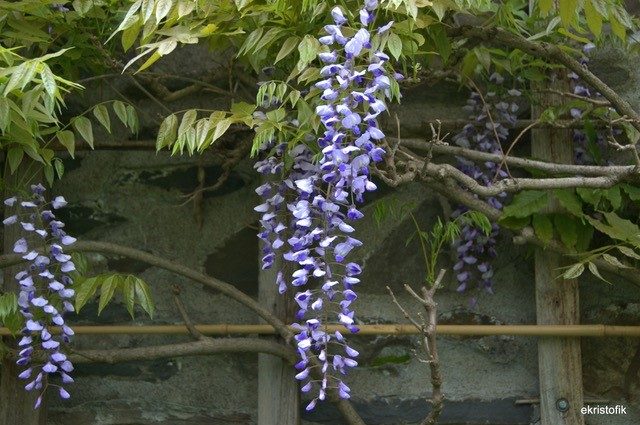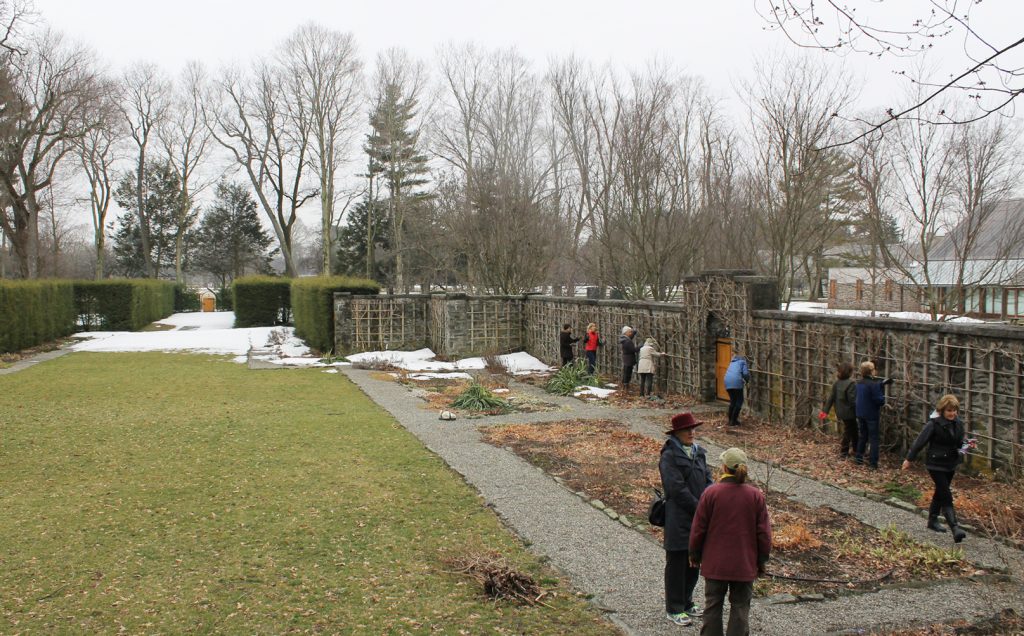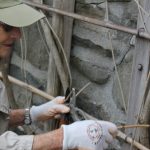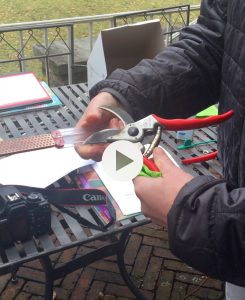designed for the way women work.

Spring Pruning Tips
Category: How-To Projects, Presenting "The Curious Gardener"
Pruner Maintenance:
Anne Cleves Symmes, horticulturist and garden educator at Beatrix Farrand’s celebrated Bellefield Garden in Hyde Park, NY, demonstrated how she keeps her pruners sharp and well oiled each Spring. First she uses the scouring pad side of a discarded kitchen sponge to rub off gummy buildup on the blades. You can also use a piece of wire wool for this. To sharpen your pruner she recommends a diamond blade, or you can use a sharpening stone or whetstone. Swipe the diamond blade or stone along the beveled edge of the cutting blade. Instructions often call for swiping the blade at a particular angle, which sounds very technical, but Anne reassured us that the objective is simply to try to swipe the blade at approximately the angle of the blade, which is about 10-20 degrees. If you don’t get the angle just right, don’t panic. It’s ok!
After sharpening the beveled edge turn your pruner over and swipe the back side of the blade a couple of times with your stone to remove any burs. The other pruner blade doesn’t need sharpening as it is not a cutting blade. Watch this video to see how Anne sharpens the blade of her pruner. Finally, apply a few drops of a vegetable-based oil onto the main gear of your pruner. Wipe your pruner with a soft cloth. It will not only prevent sticking but repel water and hinder rust.
Tips on Pruning Wisteria and other Vines:
At Bellefield the wisteria was planted along the inside of the west wall of the garden about a hundred years ago. It’s a long wall and the job of pruning each Spring is a big one. The day I was there a group of local women who volunteer regularly to help Anne with maintenance at Bellefield, were eager to tackle this job under her guidance. With the late (and deep) snow we have had in this region, it was the first opportunity of the season to get outside. Early spring is the best time to prune wisteria because you can see the structure of the plants and you can also see where the buds are. The buds were set last year. Wisteria will bloom in our region in late April.
Many of the points Anne makes about pruning wisteria apply to other vines as well.
Step One: Grab your pruner and favorite pair of garden gloves and start cutting the basal branches growing from the base of the plant, closest to the ground. These ‘suckers’ draw energy away from the rest of the plant and they serve no purpose.

Step Two: cut or pull loose any shoots that are growing behind supports. In the case of wisteria the shoots will eventually push out and damage your supports, so nip that problem in the bud early. (The climbing hydrangea at my home is also a plant that is aggressive and will push supports or climb behind shingle siding and do damage over time.)
Step Three: Cut all dead branches. These can be cut anytime of year. You can tell if a branch is dead if it has no new buds. Or, if you tug on it and it seems to have no life, or snaps off readily, it is probably dead.
Step Four: Judiciously start cutting long shoots that have grown since the last pruning and that are crossing other branches or are growing too far up or too far out from the supports. Always prune down to 3 or 5 buds to direct energy to flower production rather than vegetative growth.
Regular pruning of wisteria will check growth and encourage flowering. At Bellefield they try to keep the growth just below the top of the wall so the wall’s strong axis is visible in keeping with Beatrix Farrand’s vision.



